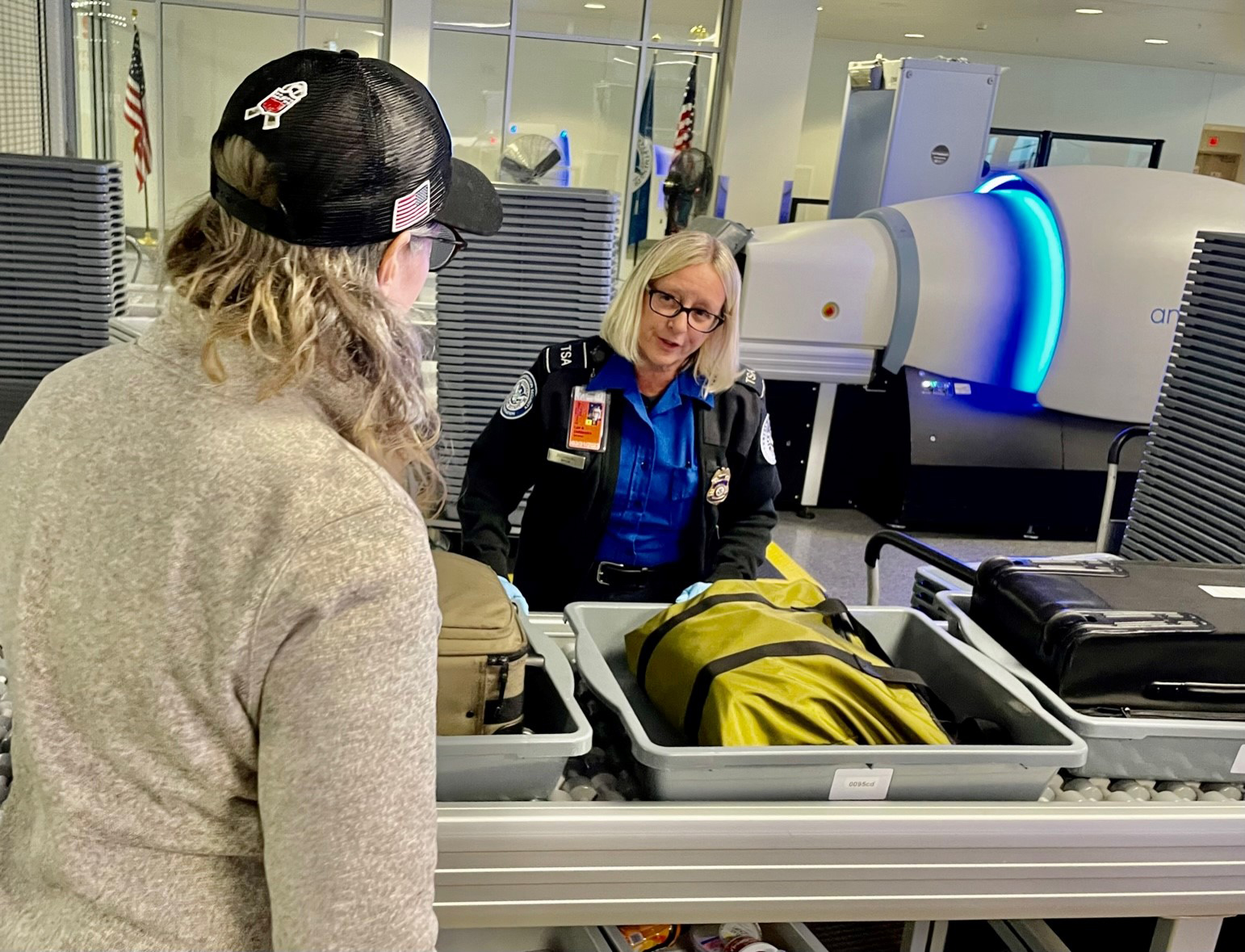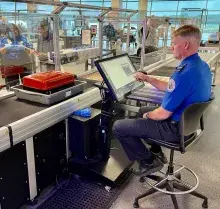
SYRACUSE, N.Y. — The Transportation Security Administration (TSA) at Syracuse Hancock International Airport is staffed and ready to handle the expected increase in travelers for the upcoming Labor Day holiday weekend during what has been one of the busiest travel summers in TSA’s history.
“The Labor Day holiday will be the final busy travel period of the summer, and our passenger volume will see a spike as early as Thursday,” said Bart R. Johnson, TSA’s Federal Security Director for Upstate New York. “If you are flying this holiday, you will see that our TSA officers are focused on keeping passengers safe so that others may enjoy their trips. I encourage passengers to listen to the guidance that our officers are offering as our team wants to help ensure that everyone has a smooth screening experience so that travelers get to their destinations safely and get home safely,” he said.
“Planning ahead and packing properly can facilitate the TSA security screening process and ease a passenger’s travel experience at the airport,” Johnson added. “That’s why it is important to know what can be packed in carry-on and/or checked baggage before arriving at the airport.”
TSA’s advice is that when a traveler is ready to pack for a trip that it is best start with an empty bag so the passenger knows with certainty what they have inside and they know that there is nothing prohibited in a side pouch, zippered pocket or just in the bottom of a bag. That goes for backpacks, roller bags, handbags, messenger bags, shoulder bags, laptop bags, duffle bags and any other carry-on bag or luggage.
It’s also important to remember that even if an item is generally permitted, it may be subject to additional screening or not allowed through the checkpoint if it triggers an alarm during the screening process, appears to have been tampered with, or poses other security concerns.
Here are some valuable, family-friendly travel tips to know before you go:
- Arrive early. The airport will be busy so arrive two hours prior to a scheduled flight to allow for adequate time to park a car or return a rental vehicle, check bags, go through the security checkpoint and arrive at the departure gate.
- Unpack before you pack. Start with an empty bag. Unzip and look into every compartment. Prior to packing that empty bag, check TSA’s “What Can I Bring?” tool to find out whether an item should be packed in a carry-on bag, checked bag, either or neither. If children are packing their own bags, make sure they are not packing anything that is or may resemble a prohibited item. Water guns, cap guns, BB guns or any other replica weapons are not able to fly in a carry-on bag. Firearms are only allowed in checked baggage when unloaded, declared, packed properly and declared at the airline check-in counter.
- Know TSA’s liquids rule to avoid a bag check. Know the 3-1-1 liquids rule. Pack liquids, gels and aerosols larger than 3.4 ounces in a checked bag to avoid having a carry-on bag pulled aside and opened by a TSA officer at the checkpoint. The most common mistake travelers make when appearing at the checkpoint is having a large liquid container in their carry-on bag. Passengers who are traveling with an infant, will find that most items in their diaper bag are actually exempt from TSA’s liquids rule. Breast milk, powdered formula, baby food and snacks, bottles and sippy cups are all allowed to be carried through a checkpoint. This also goes for liquid and cream medications. It is advised to place these items from a carry-on bag into a bin for X-ray screening. It’s important to note that if an item does alarm, additional screening may be required.
- Just @AskTSA. If you’ve got a question about the security screening process, ask us! TSA offers five convenient ways to find out if an item is allowed to be in a carry-on or checked bag. TSA’s homepage has a “What Can I Bring?” feature. Type in an item and it will let you know where the item should be packed. TSA has a free downloadable app called MyTSA that has that same handy quick search function. Travelers may tweet a question to @AskTSA; can send a question via Facebook or send a question via text message by texting “Travel” to AskTSA (275-872).
- Request Special Assistance. Contact TSA Cares 72 hours prior to traveling if someone you’re traveling with requires special accommodations during the airport security screening process. TSA Cares is a helpline to assist travelers with disabilities and medical conditions. TSA Cares can be reached online at http://www.tsa.gov/contact-center/form/cares or by phone at (855) 787-2227 or federal relay 711. If you’re already at the airport, inform the TSA officer if a child or family member has a disability, medical condition or medical device, and advise the officer of the best way to relieve any concerns during the screening process. Parents may carry their child through screening to ease the screening process. The TSA officer will not remove a child from his/her mobility aid, wheelchair or scooter.
- Travel with ease with TSA PreCheck®. Our trusted traveler program has more than 80 participating airlines and has two authorized enrollment providers. Most applicants get a Known Traveler Number within three to five days and 99 percent of members wait 10 minutes or less in a screening lane. Members are not required to remove shoes, belts, laptops, or light jackets when going through airport security. If you already have TSA PreCheck®, your kids 17-years-old and younger may join enrolled adults in the dedicated lanes when traveling on the same reservation and if the TSA PreCheck indicator appears on the child’s boarding pass.

